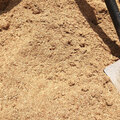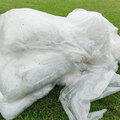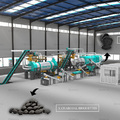In the quest for sustainable agricultural practices and waste management solutions, the utilization of sugarcane bagasse for charcoal production has emerged as a promising avenue. Sugarcane bagasse, the fibrous residue left after extracting juice from sugarcane, has long been considered a byproduct. However, innovative technologies now allow us to convert this agricultural waste into charcoal, offering a valuable resource for farmers and contributing to a circular economy. In this comprehensive post, we explore the process of transforming sugarcane bagasse into charcoal and delve into the numerous benefits it presents for agriculture and the environment by sugarcane bagasse charcoal making machine.

Understanding Sugarcane Bagasse
Sugarcane bagasse is the fibrous material that remains after sugarcane has been crushed to extract its juice. Traditionally, bagasse has been used as a fuel in sugarcane mills for steam and power generation. However, with advancements in technology and a growing focus on sustainable practices, the potential of bagasse extends beyond its role as a mere energy source.
The Charcoal Production Process from Sugarcane Bagasse
1. Collection and Preparation
The first step in the process involves the collection and preparation of sugarcane bagasse. After sugarcane is processed in mills to extract juice, the leftover bagasse is collected and transported to a charcoal production facility.
2. Drying
The bagasse is then subjected to a drying process to reduce its moisture content. Lowering moisture is crucial for efficient carbonization in the subsequent steps of charcoal production.
3. Carbonization
Carbonization is the key process where bagasse is heated in the absence of air, a method known as pyrolysis. This thermal decomposition transforms the bagasse into charcoal, releasing volatile compounds and leaving behind a carbon-rich residue.
4. Activation (Optional)
In some cases, an activation step follows carbonization. Activation involves exposing the charcoal to an oxidizing gas, creating pores in the material. This enhances the charcoal's adsorption capabilities, making it suitable for various applications beyond traditional fuel.
5. Grinding and Sizing
The resulting charcoal can be ground and sized according to specific requirements. This step ensures uniformity and facilitates the integration of bagasse charcoal into different agricultural applications.
6. Packaging
The final product, bagasse charcoal, is packaged and ready for distribution. It can be used directly as a soil amendment or further processed into different forms based on its intended application.
Agricultural Benefits of Bagasse Charcoal
1. Soil Amendment and Fertilizer
Bagasse charcoal serves as an excellent soil amendment due to its porous structure, which enhances soil aeration and water retention. Additionally, it acts as a slow-release fertilizer, providing essential nutrients to plants over an extended period.
2. Carbon Sequestration
By converting sugarcane bagasse into charcoal, carbon is effectively sequestered in the soil. This contributes to mitigating climate change by capturing and storing carbon, preventing it from being released into the atmosphere.
3. Improved Water Management
The porous nature of bagasse charcoal not only improves soil structure but also aids in water management. It helps prevent water runoff, allowing for better water infiltration and reducing the risk of soil erosion.
4. Enhanced Microbial Activity
Charcoal is known to promote microbial activity in the soil. This is beneficial for nutrient cycling, as microorganisms play a crucial role in breaking down organic matter and making nutrients available to plants.
5. Reduced Soil Acidity
The alkaline properties of bagasse charcoal can help neutralize soil acidity, creating a more balanced and favorable environment for plant growth.
Environmental Sustainability
1. Waste Reduction and Circular Economy
Converting sugarcane bagasse into charcoal represents a shift from viewing it as waste to considering it a valuable resource. This aligns with the principles of a circular economy, where waste is minimized, and resources are reused and recycled.
2. Renewable Energy Source
Charcoal derived from bagasse can serve as a renewable energy source. When used for cooking or heating, it provides an eco-friendly alternative to traditional fossil fuels, contributing to a reduction in greenhouse gas emissions.
3. Biomass Energy Production
Beyond charcoal, bagasse can be used as a feedstock for biomass energy production. This further diversifies the renewable energy options available and reduces dependence on non-renewable sources.
Challenges and Considerations
While the transformation of sugarcane bagasse into charcoal holds tremendous potential, certain challenges and considerations must be addressed:
Technology Adoption: The adoption of bagasse charcoal production technologies may face barriers related to initial investment costs and technological know-how. Support and incentives for farmers and entrepreneurs can facilitate widespread adoption.
Market Demand: The success of bagasse charcoal largely depends on the existence of a market demand for the product. Educating farmers and consumers about its benefits is essential for creating and sustaining this demand.
Logistics and Infrastructure: Establishing efficient logistics and infrastructure for the collection, processing, and distribution of bagasse charcoal is crucial. This requires coordination among various stakeholders, including sugarcane mills, farmers, and charcoal producers.
Research and Development: Continuous research and development are essential for improving the efficiency of bagasse charcoal production methods and exploring new applications for the product.

Future Outlook and Conclusion
The conversion of sugarcane bagasse into charcoal represents a transformative approach to agriculture waste recycling. As technology advances and awareness grows, the integration of bagasse charcoal into agricultural practices can contribute significantly to sustainable farming and environmental conservation.
In conclusion, the journey from sugarcane bagasse to charcoal embodies the essence of turning waste into a valuable resource. By embracing this innovative approach, we not only address the challenge of agricultural waste but also create a positive impact on soil health, water management, and renewable energy sources. It is time to recognize the potential of sugarcane bagasse as a catalyst for sustainable agriculture and contribute to the building of a greener and more resilient future.





